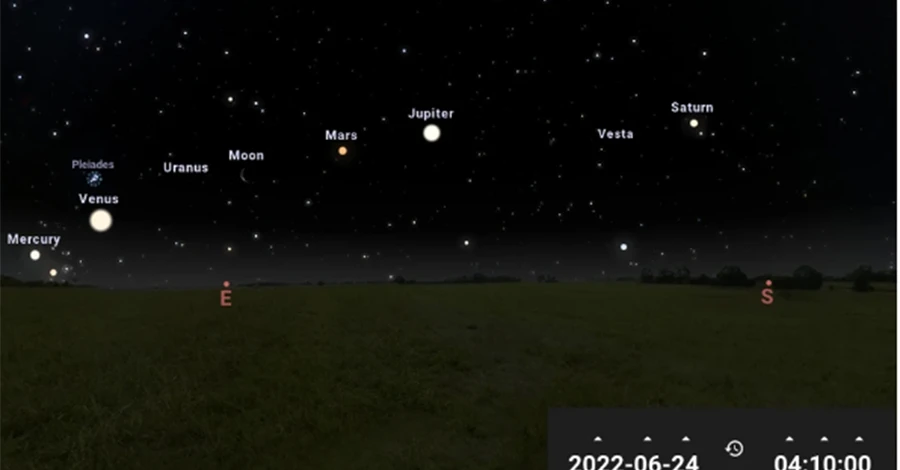Sidewalk astronomy sessions, during which enthusiasts of this science put their telescopes in crowded places and demonstrate celestial objects to everyone, take place in the evenings. These are unfavorable times for them now, and not only because of the curfew. The problem is also that not a single planet is visible in the evening sky. Where did they all get to?
Obviously, if something is not in the evening sky, you should look for it in the morning. The planets there began to “cluster” back in April, but for a full “company” they lacked Mercury and Uranus, which were visible shortly after sunset. However, in May they passed the connection with it and also began to appear in the sky before dawn. In mid-June, Mercury reached the largest western elongation, which made it possible to observe it for 10-15 minutes at the latitude of Kyiv. At that time, the angular distance between it and Saturn was less than 95°, and all the other large planets lined up on this “arc”: Venus, Uranus, Mars, Jupiter and Neptune.

Above the horizon, they now appear in reverse order: first Saturn rises at about midnight, then Neptune in less than an hour, then Jupiter and Mars, around 2:30 a.m. — Uranus, half an hour later — Venus, and last, already in a very bright sky — Mercury. The data are given for the morning of June 24 in Kyiv; on other days and in other places, the picture will be different, but not significantly.
Starting from June 19, the Moon alternately “visits” the planets. On this day, it found itself not far from Saturn. On the morning of June 21, it could be seen between Neptune and Jupiter, on June 23 — less than 3° from Mars, on June 25 it will pass near Uranus, and the next day — near Venus.
On June 27, our natural moon would have to pass close to Mercury, but in our latitudes it will be difficult to see this approach, since the smallest planet rises shortly before the beginning of civil twilight. On this day, the angular distance between it and Saturn will reach 110° and continue to grow.
Recall that from the point of view of astronomy, it is impossible to call the mentioned phenomenon a “parade of planets”, since they do not “fit” into some relatively narrow sector on one side of the Sun, although the angle between the directions from it to Earth and Uranus (the so-called radius vectors of these planets) will reach 133°, and the directions to all the others will somehow end up between them.
It is also not entirely true to believe that such “parades of planets” are rare phenomena. A much more “dense” convergence of the major planets, when the extreme “links” of their “chain” will be separated by only 71°, will take place in May 2024, but it will be impossible to fully observe it, since Venus and Jupiter will be located very close to the Sun in the sky at this time.
Follow us on Twitter to get the most interesting space news in time
https://twitter.com/ust_magazine

